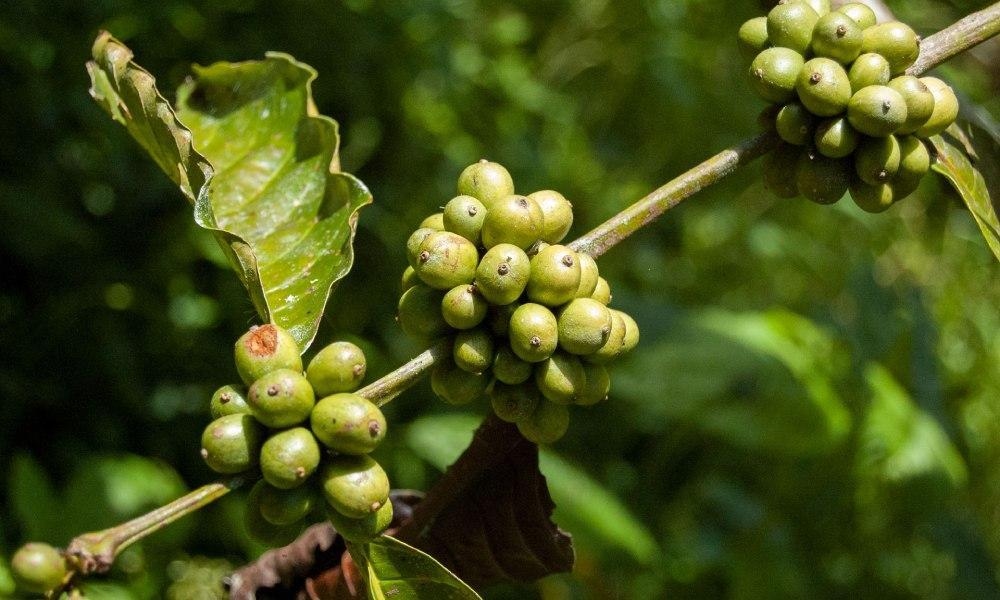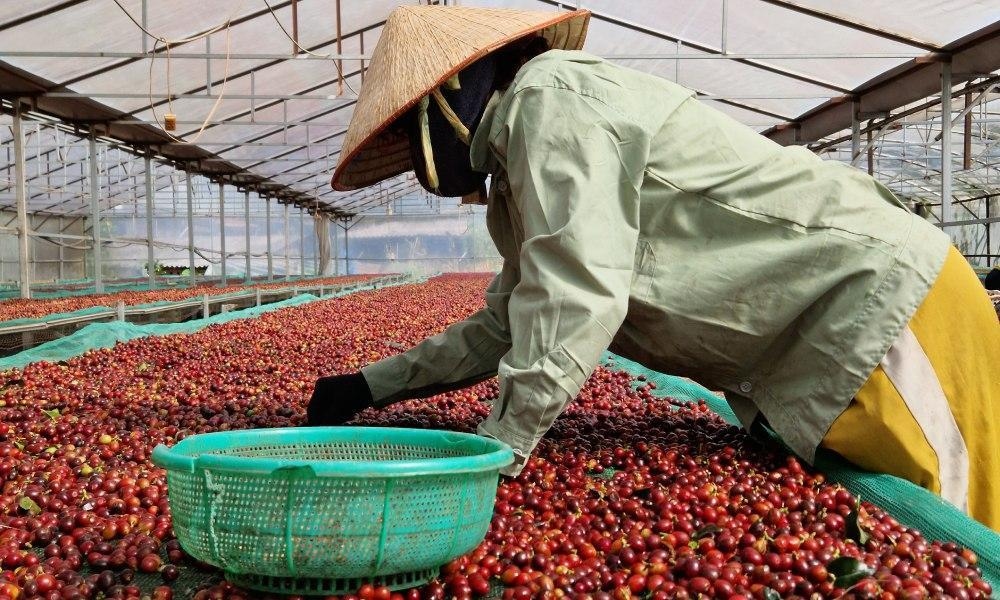Is it time to stop comparing arabica and robusta coffee?
Jordan Montgomery speaks with Gio Hidalgo of Latitud 0° and Will Frith of Building Coffee about why pitching arabica against robusta coffee is a false dichotomy.
The rise of specialty coffee has gone hand-in-hand with the glamourisation of the word “arabica”.
Around the turn of the century, packaging proudly displaying “100% arabica” became shorthand for “high-quality coffee”, while suggesting that anything else was inferior. Unsurprisingly, this obsession with arabica as a species soon left others at the wayside, not least robusta.
This wasn’t completely without merit. Historically, most of the robusta coffee found on the market has been harsh, bitter, and rubbery compared to the smoother, sweeter characteristics of arabica beans. Robusta beans also tend to have higher caffeine content, creating the impression that it is the “stronger” coffee, too.
However, robusta continues to make up more than 40% of global coffee production. It is widely used in everything from instant to specialty coffee blends, and it offers a number of characteristics that many prefer, particularly when used to make espresso.
As such, some have begun to question whether comparisons between the species is justified or even relevant. And, in particular, whether thinking of arabica while drinking robusta coffee – and viceversa – could warp perceptions.

Two species, two markets
Gio Hidalgo is the founder of Latitud 0° Green Coffee in Ecuador and co-founder of Giovanna Kaffee Roastery in Cologne, Germany. Her roastery and coffee shop specialise in the use of Coffea canephora, of which robusta is the most widely cultivated subspecies.
Despite having received overwhelmingly positive feedback for her company’s canephora coffees, Gio maintains that the main perpetrators behind negative perceptions of robusta coffees are quality and price.
“The coffee industry wanted tonnes of cheap canephora for their brands, and if you pay almost nothing for a product, you get bad quality,” she says. “As a consequence, canephora was automatically perceived as inferior in taste and quality.”
To this day, much of the world’s robusta is used in soluble coffee products, as a “filler” for coffee blends, and in commodity-grade coffee products. As a result, many believe that there may not be room – or demand – for its use in the specialty coffee sector.
With vastly different characteristics and regulations, as well as strong opinions and biases in the coffee sector regarding quality, it seems misguided to hold arabica and robusta to the same standards – or to view them as the same product at all.
Will Frith is the founder and product director of Building Coffee roastery and Bel café in Vietnam. In his opinion, the specialty coffee sector needs to acknowledge the differences between arabica and robusta and treat them as separate products.
Not only will this allow the coffee industry to realise each species’ value in various markets, he says, but it will satisfy consumer demand, too. He recently commented that because they serve different markets, we shouldn’t worry about them competing with each other.
“The gas station coffee crowd isn’t into a fruity and floral, delicate, tea-like body,” he explained. “They want a ‘kick’ – a ‘strong coffee’ that gets them and keeps them moving, or as they’d put it: ‘coffee that tastes like coffee’.”
Despite robusta coffee having lost much of its market share over the last few decades, experts like Will assert that there is potential for growth in robusta consumption in certain markets – provided that both the quality of coffee production and industry prejudices improve.
In fact, many of these prejudices stem from the lower quality control standards applied to robusta production and processing.
“Export regulations allow twice the amount of defects and foreign matter in robusta compared to arabica,” he tells me. “We’re only just beginning to understand the potential, as some have shifted to quality.”
“I think the traditional view on robusta was fair, but things are changing now, so it’s time to let go of those outdated paradigms,” he adds.
In specialty coffee circles, this potential Will refers to has been given a name: fine robusta.
Supporters argue that improvements in robusta coffee production and export regulations may lead to positive outcomes, including higher earnings for coffee farmers and a higher quality product for existing consumers. However, some maintain that this may have little effect on the negative perceptions around it.
“Consumption in the West is quite healthy and well-entrenched, so introducing robusta to that market would not have much of an effect on per capita use,” Will says. “It would likely grow the market a bit, as consumers who like their coffee stronger, with milk, or less fruity and acidic will gladly accept robusta.”

What does the future of fine robusta coffee look like?
Gio agrees that robusta has the potential to introduce a wider audience to specialty coffee.
“Our aim is to introduce people to drinking specialty coffee, and we’ve found that canephora can be a great door opener to get people interested in buying socially and environmentally sustainable coffee,” she explains.
However, despite its positive reception with some consumers, robusta has a long way to go until it finds favour with many of the world’s specialty coffee roasters. With existing biases influencing the opinions of buyers, roasters, and consumers, is there a way to bridge the perceived gap, or is it indeed a false dichotomy?
Many believe that with challenges to the growth, production, and consumption of arabica coffees in recent years such as disease, climate change and market fluctuations, the coffee industry may soon cease to have a choice.
Multiple studies indicate that within the coming decades, shifts in climate could cause specialty coffee to become exceedingly expensive, pricing many coffee drinkers out of arabica and toward robusta.
“As a consequence of climate change worldwide, we are going to produce and drink more robusta, as it is naturally more resistant to the struggles arabica is facing,” Gio explains.
Will, for one, is optimistic that this will present more diverse choices for consumers.
“Coffee consumption has a complicated future,” he says. “I think demand for all types of coffee will increase, but production realities will drive prices up for some, especially specialty arabica, forcing consumers to choose based on their budget.”
By having more options – in terms of taste and price – coffee drinkers will have an exciting opportunity to change their coffee preferences.
“A potential scenario is that fine robusta will become ‘regular coffee’ and specialty coffee will be reserved for weekends or special occasions,” Will concludes. “I think that for a lot of curious coffee drinkers, having different things to try is exciting.’’
Photo credits: Gio & Anna








